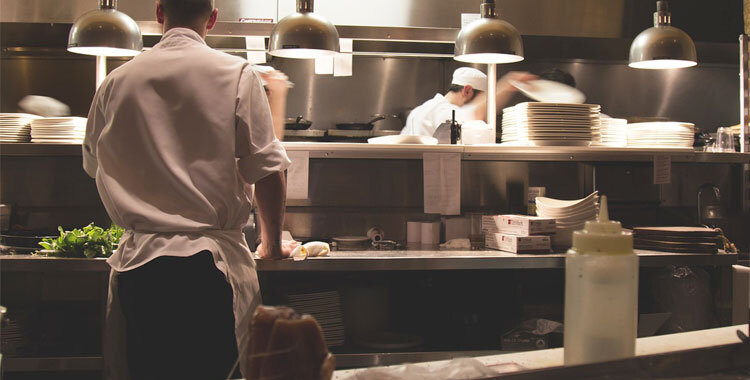In any high achieving restaurant, the up most should be done to ensure customers and staff are given a safe environment. Here at National Testing we have put together some important health and safety advice in order to ensure that customers will remember your restaurant for all the right reasons:
Slips, trips and falls
Slips and trips are one of the single most common cause of major injury in many workplaces, even more so in the catering industry. Accidents within the restaurant environment are usually caused by food spillages, water overflow and poor condition of flooring meaning the correct protocol needs putting in place to ensure the safety of staff and customers at all times.
In order to help prevent slips, trips and falls from occurring here are some simple tips you need to follow:
Containing Spillages
- Implement a system to regularly report equipment faults which could cause leaks or spillages so that they can be monitored on a regular basis.
- Use splash guards or edged work surfaces to contain spillages.
- Have suitable floor mats for critical areas and the correct type of flooring material in place
Manual handling Issues
Back pain and aches that arise from manual handling injuries are a common type of risk to health. Within kitchen environments extra care should be taken as there are various activities that can cause strain to hands, wrists, shoulders and necks. The law states that if a business is unable to avoid manual handling operations then they must ensure a risk assessment is carried out in order to manage and control potential safety issues. If you have more than 5 employees you should most definitely record your risk assessments for future reference, if you have fewer than 5 it is still good practice to record these however, it may not be mandatory.
Some tips on how to reduce risk regarding manual handling are;
- Effective training on how to use heavy intensive equipment.
- Consider each of your employees individual capabilities (eg. age, mobility, previous injuries)
- Consider the layout of kitchen areas to avoid unnecessary lifting/stretching
Cuts from knives
The most common injuries from knives in the catering business occur to the non-knife hand and fingers but can also lead to injuries on the upper arms or torso. Here are some do’s and don’ts when using knives at work;
Do:
- Train employees in the safe use of knives
- Use the correct knife suitable for the type of food you are dealing with
- Cut on a stable surface
- Use appropriate protective gloves
Don't:
- Leave knifes loose on the countertops
- Use a knife for things it should not be used for (opening can)
- Carry a knife in your pocket or apron
Slip Resistance
One of the most important long term solutions you need to implement in a catering environment is high levels of sustainable slip resistant flooring. Flooring can easily become worn down in a high traffic workplace such as a restaurant so you must ensure maintenance is regularly carried out to reduce the risks of slips and falls. We recommend that you not only test a floor material’s slip resistance before you lay any new flooring in a restaurant environment but also have existing flooring tested on a regular basis with a pendulum slip test in order to monitor any deterioration which could affect staff or customer safety.
If you become concerned for the standard of flooring in your restaurant or commercial premises and would like to book a pendulum slip test get in touch with the team at National Testing today. Alternatively if you need floor material testing to help your company choose the best material for a restaurant refurbishment we can offer you the help and advice you require.

